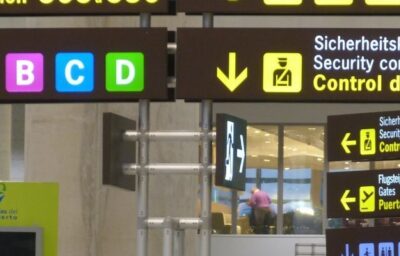
A practical travel guide for travellers with reduced mobility
Whether you use a wheelchair, cane, mobility scooter, or just need a bit more time and space, here’s a practical guide to smooth out each travel step: from booking and airports to hotels, transport, and daily logistics.
Before you book:
Clarify your needs
- Walking distance limits (e.g., “no long corridors,” “lift access essential”)
- Transfer needs (e.g., aisle chair, assistance boarding)
- Bathroom requirements (roll-in shower, grab bars, raised toilet, handheld shower)
- Bed height and space to manoeuvre
- Power needs (charging mobility devices, CPAP, fridge for meds)
Pick the right destination window
- Shoulder seasons often mean fewer queues and more time for assistance.
- Check terrain and average gradients if hills/cobbles are an issue.
Screenshot/save confirmations
- Keep all accessibility confirmations in one folder (email + phone photos).
Flights & airports:
When booking
- Add “special assistance” or “mobility assistance” to your booking. Most airlines let you specify:
- Wheelchair to gate/aircraft/seat
- Aisle chair boarding
- Early boarding
- Assistance with carry-on to seat (if allowed)
- Many airlines waive seat fees for medical reasons - ask Declare mobility devices (dimensions, battery type, weight). Note if it must travel in the cabin (folding chair) or as checked
A week before departure
- Reconfirm assistance with the airline and, if possible, the departure and arrival airports.
Day of travel
- Arrive earlier than usual (assistance teams work in time slots).
- Tag mobility devices with your name, phone, destination, and simple handling instructions.
- Photograph your chair/scooter from all angles before hand-over.
- Keep essentials in your cabin bag: medicines, pressure-relief cushion, transfer belt, lightweight folding cane, disability documentation/letter, charger, and a change of clothes.
On board
- Ask cabin crew to store mobility aids allowed in cabin and to confirm assistance is booked at arrival.
- If you’re at fall risk, request help retrieving your bag and waiting for the aisle chair after landing.
Accommodation:
Search smart
- Use filters for “accessible,” “lift” “ground floor.” Then verify directly with the property - filters can be vague.
What to ask hotels (call or email)
- Is there step-free access from street to reception to room?
- Lift size (door width and internal dimensions) and whether lifts serve all floors 24/7.
- Room door width and turning space.
- Bathroom: roll-in shower, grab bars by toilet and shower, shower chair/bench, fixed or handheld showerhead, space under sink.
- Bed height from floor; gap under bed if you use a hoist.
- Emergency procedures for guests who cannot use stairs (evacuation chairs, refuge points).
On arrival
- Ask staff to show the route to your room and nearest accessible exit.
- Check bed/bath layout before unpacking; if it doesn’t match the promise, request a room move right away.
Ground transport:
Airport transfers
- Pre-book accessible taxis or vans; provide chair/scooter dimensions and whether you’ll transfer or remain seated.
- Save the dispatcher’s number and your driver’s name, if possible.
Trains & buses
- Many networks offer “Passenger assist” or similar—book ramps/boarding help in advance.
- Confirm step-free stations and lift status on the day (apps/websites often show outages).
Car hire
- Request hand controls or spinner knobs well in advance.
- If you travel with a foldable chair, check boot dimensions of the car class.
Activities & dining:
Look for step-free entrances, accessible toilets, and seating with back support.
- Book timed tickets to reduce queuing.
- Ask attractions about loaner wheelchairs or quiet hours if relevant.
- For beaches/parks: ask about beach mats, amphibious chairs, and accessible viewing platforms.
Packing:
- Mobility & seating: travel cushion, transfer board/belt, spare tubes/tyres, small tool kit.
- Power & charging: universal adapters, extension lead, power bank, battery documentation for airlines.
- Medical: meds in original packaging + prescriptions.
- Comfort: non-slip shower mat, lightweight rain cover.
- Paperwork: disability ID/letter, doctor’s note describing assistance needs, travel insurance details.
Travel Insurance & documentation
- Disclose all pre-existing conditions to ensure cover is valid.
- Apply for a GHIC if necessary.
- Confirm provisions for lost prescriptions, mobility equipment damage and trip interruption.
- Store policies on your phone.
Know Your rights
- Airlines and many rail networks must provide wheelchair assistance at no extra cost and permit mobility aids (with conditions for batteries). Policies vary check the airline and local transport authority site for the route you’re taking.
- If you’re denied promised assistance or equipment is damaged, file an incident report immediately and keep all documentation.
Invisible disabilities & energy management
- If you benefit from a discreet signal, consider a sunflower lanyard or similar program where available.
- Plan “anchor” rest periods each day; schedule the biggest activity when you typically have the most energy.
- Build buffer time between connections - rushing increases risk of falls and flares.
Final Tips
- Build in recovery days after long flights or big excursions.
- Share your live location with your travel partner or a friend.
- Trust your pace: you set the schedule, not the itinerary.
Travel insurance
Total Travel Protection travel insurance has no upper age limits and can provide cover for declared pre-existing medical conditions.
Remember Total Travel Protection do medical screening differently so you may get a better price.
